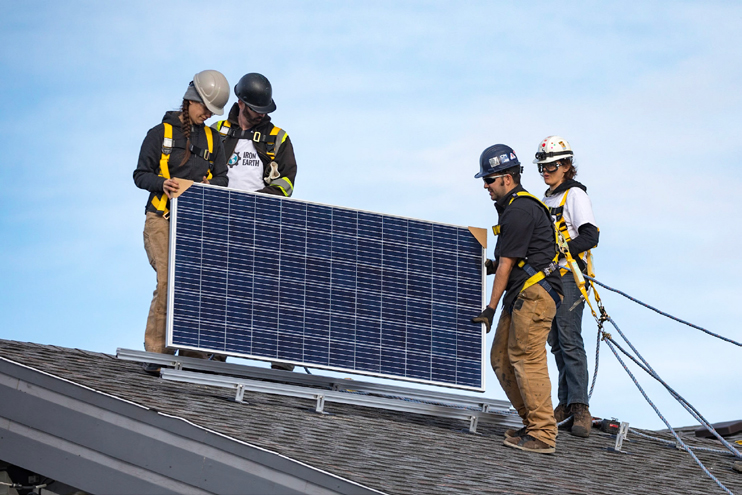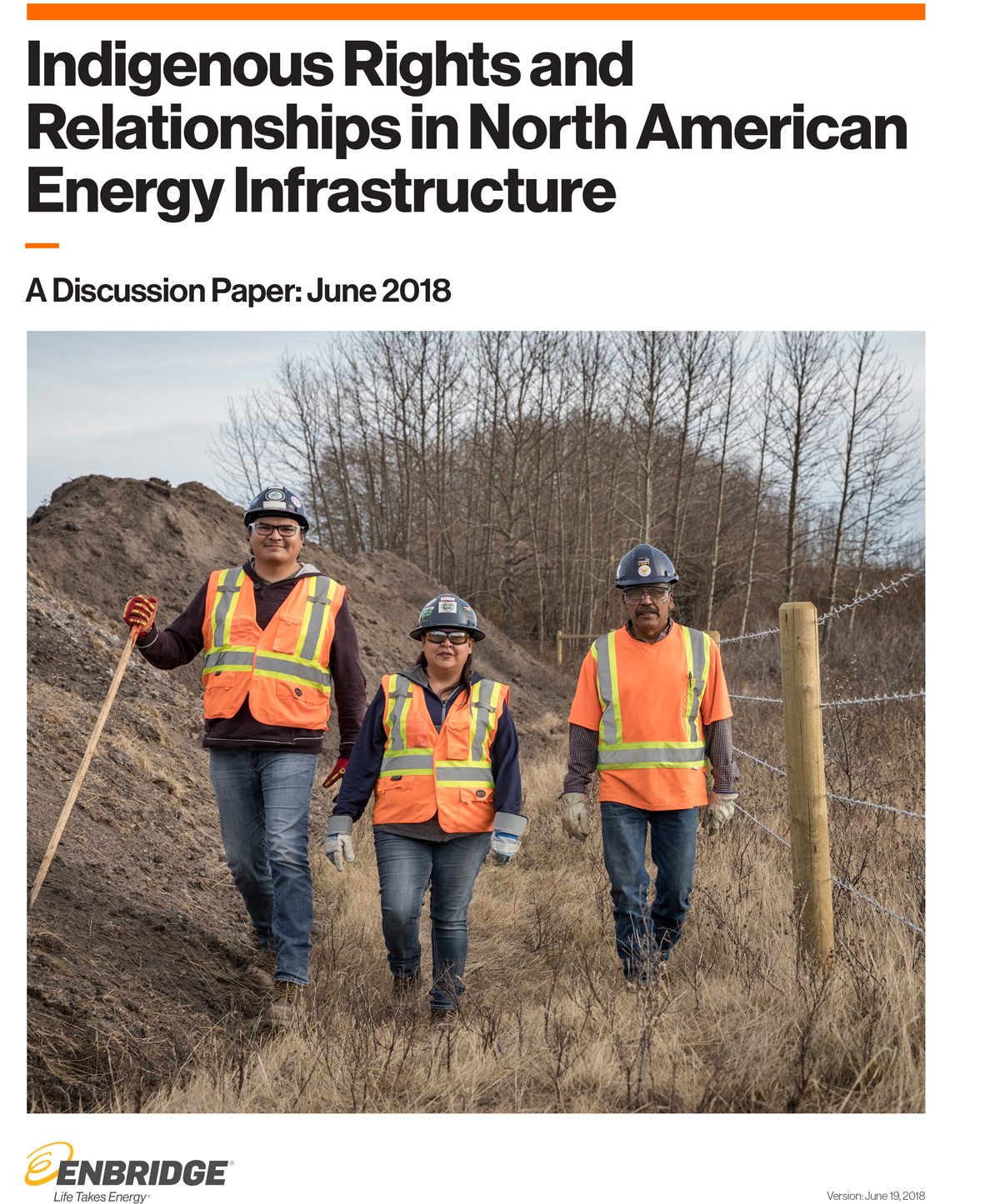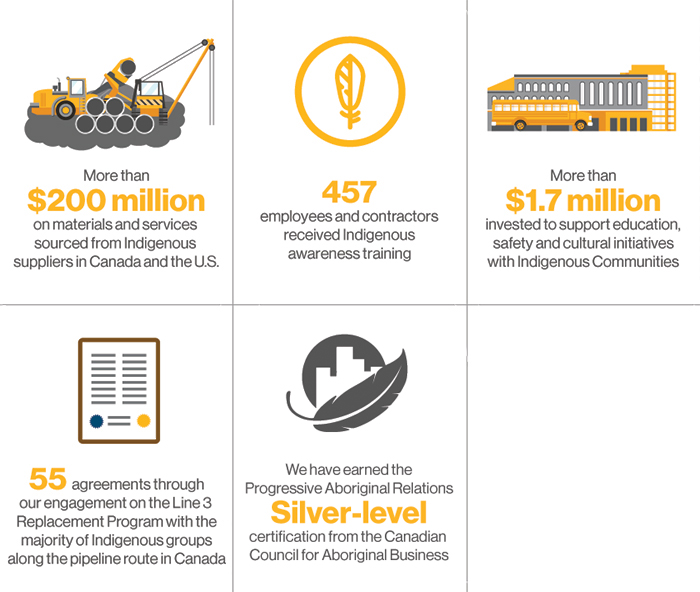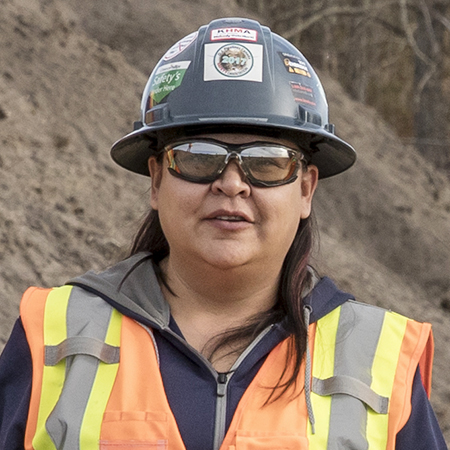Indigenous Engagement
Overview
We are committed to respecting the distinct rights of Indigenous Peoples
We recognize the history, uniqueness and diversity of Indigenous Peoples and strive to build trust and lasting relationships with them. In the course of our projects and operations, we are regularly in contact with many Indigenous communities and groups in Canada and Native American tribes in the U.S. In both countries, legal requirements and good business practice mandate consultation and engagement with Indigenous communities on energy infrastructure projects and operations.
2 performance objectives:
- Ensuring we have robust policies and practices in place to support ongoing, comprehensive engagement with Indigenous communities
- Creating economic participation opportunities for Indigenous communities
2017 Highlights
Management Approach
Indigenous Consultation
Our policies, programs and initiatives involving Indigenous peoples and communities are rooted in our respect for their formal and informal rights and interests. In all instances we seek to consult with Indigenous communities about our projects and operations, and to resolve any concerns or complaints through direct communication, engagement and, where appropriate, negotiation or mediation.
2017 Performance
Ensuring We Have Robust Policies and Practices in Place to Support Ongoing, Comprehensive Engagement with Indigenous Communities
Because Indigenous Peoples in Canada and the U.S. have distinct rights, Enbridge acknowledges that Indigenous Peoples are more than stakeholders and has adopted a separate corporate policy to ensure that our activities respect those rights. Our Indigenous Peoples Policy outlines the key principles that guide our engagement with Indigenous Nations and groups in areas in North America where our pipelines cross their lands.
We are implementing our Indigenous Peoples Policy through guidelines, practices and management systems that recognize the legal, regulatory and historic context on Indigenous rights and support best practices on Indigenous consultation and engagement across all of our projects and operations.
While we believe that building sustainable relationships with Indigenous Nations connects directly to each of our core values—Integrity, Safety and Respect—we also believe that it is integral to business success. Historically, Enbridge—like other companies with linear infrastructure projects—has pursued project-specific, limited-term capacity agreements or relationships with local Indigenous Nations. Today, we have come to more fully appreciate the value that building longer-term relationships can create for both the communities involved and our business. Depending on the nature of a project, elements of our Indigenous consultation and community engagement process can include:
Our approach to Indigenous consultation and engagement on Enbridge’s Line 3 Replacement Program in 2017–2018 provides the best real-time example of how our learning on Indigenous inclusion in energy infrastructure has evolved—and continues to evolve.
Enbridge’s Line 3 Replacement Program is the largest project in our history. It will replace 1,031 miles (1,660 kilometres) of existing aging pipeline and associated facilities on both side of the Canada-U.S. border with the newest and most advanced pipeline technology and provide improved capacity to support U.S. and Canadian demand for Canadian crude oil.
Our “L3R Program” also involves the most comprehensive program for Indigenous consultation and engagement in Enbridge’s history. At the direction of the federal regulatory agency in Canada responsible for pipelines – the National Energy Board (NEB) – Enbridge also consulted and engaged with over 150 different Indigenous groups as far away as 187 miles (300 kilometres) away from the existing pipeline right-of-way across the provinces of Alberta, Saskatchewan and Manitoba.
Significant Outcomes to Date
- We have secured 55 agreements representing a majority of Indigenous Nations and groups directly along the Line 3 Replacement Program corridor in Canada.
- We have improved communications and commitments on safety and maintenance matters with U.S. Native American Tribes with whom we have easement agreements.
For more information on our approach to consultation and engagement on Enbridge’s Line 3 Replacement Program please see section 7 of our Discussion paper on Indigenous Rights and Relationships in North American Energy Infrastructure.
Creating Economic Participation Opportunities for Indigenous Communities
Socio-economic Participation through Management Systems and Processes for Supply Chain Management:
Indigenous socio-economic participation is one of the key areas in our Indigenous Engagement Program. We have long recognized that hiring Indigenous businesses and contractors supports local employment, gives us the opportunity to understand available services and talent, and helps us build trust and relationships. We have also recognized the important contribution that Indigenous businesses make each year to the overall economy, and have a long history of working with them.
We have a specialized team within our broader Supply Chain Management (SCM) function to focus on expanding opportunities for socio-economic participation by Indigenous groups. This team includes Indigenous business development specialists with the skill sets required to support the achievement of our goals for Indigenous procurement.
In 2017, we spent more than $200 million in North America on procuring good and services from Indigenous suppliers and continue to add more Indigenous suppliers in the U.S. and Canada to our Indigenous Business database.
| Dollars Spent on Materials and Services Sourced from Indigenous Businesses in Canada and the U.S. | |||
|---|---|---|---|
| 2015 | 2016 | 2017 | |
| Major Projects and Liquids Pipelines (MP/LP) | >$63 million | $79 million | $136.2 million |
| Union Gas | $6 million | $13 million | $10.5 million |
| Gas Transportation & Midstream* | - | - | $70.1 million |
| Number of Qualified Indigenous Businesses Identified and Documented in Our Databases / Business Listings | |||
| MP/LP Canada | - | 600 | 760 |
| MP/LP U.S. | - | - | 100 |
| Union Gas | - | - | 74 |
* In British Columbia Only
Community Investment: Building Meaningful Relationships with Indigenous Communities
Enbridge is proud to partner with and support Indigenous communities near our projects and operational rights-of-way. We strive to share our success with the communities where we operate. We use investment, partnerships, and human capital to support community organizations that share our commitment to fueling quality of life and making a positive, lasting impact in communities.
In 2017, Enbridge continued its long-standing support for educational, safety and cultural initiatives with Indigenous communities, investing more than $1.7 million.
Some examples of our Indigenous community investment include:
- Through the Energy Futures Lab, we supported the Iron and Earth Solar Skills Program, providing solar installation skills training to energy workers and Indigenous community members. This pilot program supported the installation of a solar system at a community daycare at the Louis Bull Tribe in Alberta.
- Enbridge Aboriginal Home Program in partnership with Habitat for Humanity supported building homes for Indigenous families as part of the Jimmy and Rosalynn Carter Work Project, as well as supporting the building of homes with the Tyendinaga Mohawk Community in Ontario.
- We supported a transformational reading incentive program at Tsi Snaihne School, which is governed by the Ahkwesãhsne Mohawk Board of Education in Ontario.

Above: Members of the Louis Bull Tribe, in central Alberta, and fellow graduates of the Iron & Earth solar skill program install solar panels on the roof of a community daycare facility in October 2017. Iron & Earth hopes to upskill 1,000 oil, gas and coal workers, as well as Indigenous community members, as solar specialists through hands-on installations.
| 2015 | 2016 | 20171 | |
|---|---|---|---|
| Amount of community investment funding provided to Indigenous communities in Canada | >$800,000 | >$1 million | >$1.7 million |
12017 reflects Spectra Energy & Enbridge as a combined company..
Indigenous Employment
We are continuing our efforts to increase Indigenous employment by working in partnership with communities, schools and local governments. Some of these partnerships include:
Creating Hope Economic Prosperity Partnership (CHEPP):
Enbridge participated in an advisory committee that is planning three annual Indigenous Women's Talent Forums; bringing together Indigenous women interested in industry and trades, with employer representatives.
Engineering Futures:
A partnership with Edmonton Catholic Schools’ Braided Journeys Program, “Engineering Futures” matches Indigenous high school and junior high girls to female engineering mentors at Enbridge
Enbridge’s Line 3 Replacement Program has also created multiple opportunities for Indigenous participation. Over and above the standard positions that would be filled on any large pipeline construction project, we have committed to providing jobs for Indigenous construction monitors over the life of the Canadian portion of the project.
Through our ongoing engagement with Indigenous communities, we know that many Indigenous communities are able to offer a skilled workforce as well as business management experience. With that in mind, we are advancing two initiatives within our Supply Chain Management function that aim to broaden Indigenous economic participation in our Line 3 Replacement Project through increased hiring of Indigenous workers by our construction contractors.
The first initiative involves agreements between Enbridge and Indigenous communities that prepare their members for construction employment opportunities and provide ongoing support during employment. In instances where these agreements are entered into, they will define employment targets and identify compensation to Indigenous communities for those services. A second, complementary initiative that we are moving forward with is the development of a web-based labour portal, which will allow even more communities to engage with our contractors. Working with a number of Indigenous communities to develop a database of potential community members with required skills, this web-based tool will enable us to identify and connect qualified Indigenous workers with our Line 3 Replacement Project construction contractors. In addition, we have engaged relevant craft trade unions to ensure that any qualified Indigenous workers that are identified through this process can become temporary union members during their employment on the Line 3 Replacement Project.
After Enbridge’s initial archeological work on our Line 10 Westover Segment Replacement Project identified multiple sites of interest within the proposed right-of-way, we reached out to three First Nations with archaeological affiliations across Southern Ontario and because of their potential interest in the archaeological assessment work being undertaken for the project.
Early in the project, Enbridge hired an archaeologist who participated in our engagement with the Six Nations of the Grand River, Haudenosaunee Development Institute and Mississaugas of the New Credit First Nation to ensure that archeological input was included in our project planning. The extensive consultation process led to the re-route of the project around two archaeological sites within the corridor approved by the regulator. We also hired First Nations monitors who were present throughout the archeological work and reported directly to their respective communities to ensure timely updates were provided and protection measures were in place. Enbridge understands archaeological sites have a strong spiritual and cultural significance to Indigenous communities. As such, we provided capacity funding to provide resources for experts to analyze reports and findings, as well as to discuss mitigation measures. In addition to their involvement in the archaeological work on the project, members of the First Nations participated in daily environmental site visits to multiple project locations, which they identified as specific areas of interest during the construction phase. The purpose of these site visits was to demonstrate the mitigation measures implemented by Enbridge but they were also an opportunity for Enbridge to better understand the unique interests and needs of the First Nations.
Cultural Awareness and Education
We provide Indigenous awareness training at Enbridge in support of our commitment to fostering an understanding of the history, traditions, rights and culture of Indigenous peoples among our employees and contractors. Through this training, we strive to build the capacity of our employees and contractors so that they can better communicate and engage with local Indigenous peoples, and can acquire the tools necessary to build trusted and respectful relationships. We initiated this training in 2016 and in 2017, more than 450 employees and contractors received Indigenous Awareness training in five of our operating regions in Canada and the U.S. We will begin to offer online awareness training that will be rolled out to the enterprise in 2018.
Indigenous Engagement Performance Data Summary
| Dollars Spent on Materials and Services Sourced from Indigenous Businesses in Canada and the U.S. | |||
|---|---|---|---|
| 2015 | 2016 | 2017 | |
| Major Projects and Liquids Pipelines (MP/LP) | >$63 million | $79 million | $136.2 million |
| Union Gas | $6 million | $13 million | $10.5 million |
| Gas Transportation & Midstream* | - | - | $70.1 million |
| Number of Qualified Indigenous Businesses Identified and Documented in Our Databases / Business Listings | |||
| MP/LP Canada | - | 600 | 760 |
| MP/LP U.S. | - | - | 100 |
| Union Gas | - | - | 74 |
| Amount of community investment funding provided to Indigenous communities in Canada | |||
| Enbridge | More than $800,000 | More than $1 million | More than $1.7 million |
| Number of employees and contractors receiving Indigenous awareness training | |||
| Enbridge | ** | 750 | 457 |
* In British Columbia Only
Conversations
1) What compelled you to apply for Enbridge’s Aboriginal Construction Monitoring Program? What interested you?
I wanted to challenge myself and obtain more skills, experience and knowledge from a higher, managerial position in the oil industry in hopes to maintain that career level in the near future.
2) How was your experience being employed as an Indigenous Monitor for Enbridge’s Line 3 project?
With my previous position in the oil field, the majority of my time was spent in the office. Therefore, I was reading a lot of paperwork and having to imagine projects being built compared to actually having that visual perspective from start to finish. This was a totally different and amazing experience. That makes me proud to be a part of that!
3) How will this experience and the skills you developed help in future employment?
It's given me a broader view of the different trades that are out there in the pipeline industry—all the different activities, workers, heavy equipment, etc.; so much going on at once during construction. This has given me the opportunity and experience in what is expected or what to watch for and how to deal with different situations, whether it's in regards to safety or just doing your job in general.
4) Are you still working on the Line 3 Replacement Program or has the work wrapped up? What are your future plans?
We've come to an end due to spring breakup. However, I am looking forward to receiving a call back to finish up the reclamation part of the Line 3 Replacement Program once work commences again. I also hope that the experience and skills I’ve obtained through the monitoring program will benefit me for any other future opportunities!









